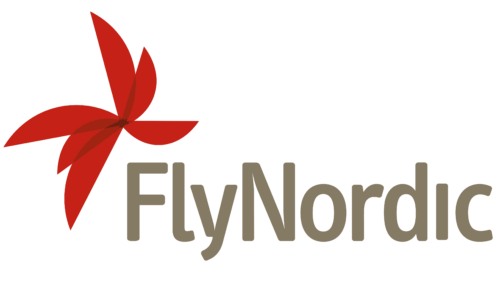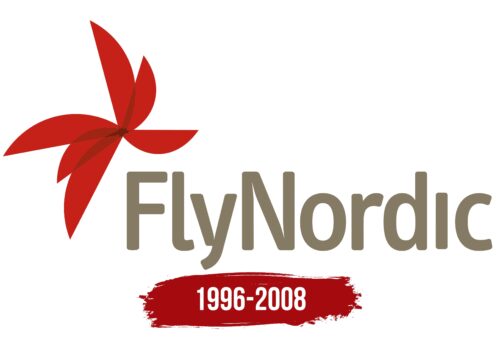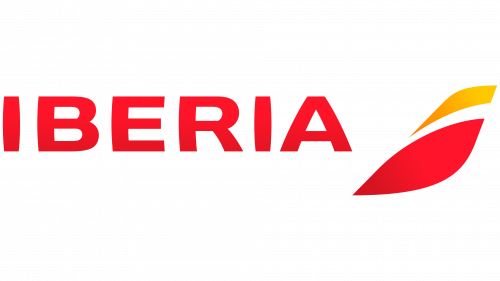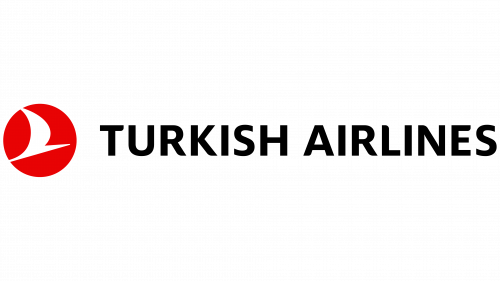The FlyNordic logo is light, captivating, and abstract. The design depicts flight. The symbol floats in space, attractive with its beauty and fluidity. The emblem conveys that air is the company’s true element. The brand knows how to follow its currents and effortlessly control movement.
FlyNordic: Brand overview
FlyNordic, established in 1996 under the name Reguljair, was originally created as a regional division of the Swedish airline Finnair. Its operations initially focused on domestic routes within Sweden and some international flights to Finland and Norway.
By the early 2000s, the airline changed its business model and switched to the FlyNordic brand, beginning to offer low-cost air transportation throughout Scandinavia and the rest of Europe. From its hub in Stockholm, FlyNordic began battling big-budget competitors such as Ryanair and easyJet.
With a fleet of Boeing 737 aircraft, FlyNordic served up to 30 European destinations. Despite being part of the Finnair group and working closely with the parent company, the airline faced high operating costs, which made it difficult to compete profitably with larger low-cost competitors.
In 2007, Norwegian Air Shuttle acquired FlyNordic as part of its Scandinavian growth strategy. A year later, by 2008, FlyNordic’s operations were fully integrated into Norwegian Air Shuttle.
At its zenith, FlyNordic could boast of carrying around two million passengers annually and employing more than 400 people. Despite serious efforts to create a low-cost market in Scandinavia, the airline faced stiff competition from faster-growing low-cost competitors on similar routes.
Meaning and History
What is FlyNordic?
This former Swedish budget airline based in Stockholm offered affordable flights to various destinations in Scandinavia and Europe. The airline operated a fleet of narrow-body aircraft, such as the Boeing 737 and MD-80, configured for efficient and economical operations.
1996 – 2008
This now-defunct Swedish airline decided to go beyond standard symbols such as flying birds or airplanes. Instead, it used an original graphic symbol resembling a red flower. The petals in the form of elongated semi-ovals were associated with lightness, airiness, and weightlessness and emphasized the uniqueness of the brand. Next to it was the inscription “FlyNordic,” which noticeably lacked a dot above the lowercase letter “i.” Despite the gray color, the text was bright thanks to the stylish font with rounded corners and small cutouts.
The choice of the red flower as a graphic element is markedly different from traditional aviation logos. This gives the brand a unique visual language, setting it apart from the competitive market. The absence of a dot above the “i” in the lettering adds an extra touch of modernism and serves as a subtle differentiator. The rounded corners and font cutouts make the text more appealing and easy to read, emphasizing the brand’s commitment to being customer-friendly.





